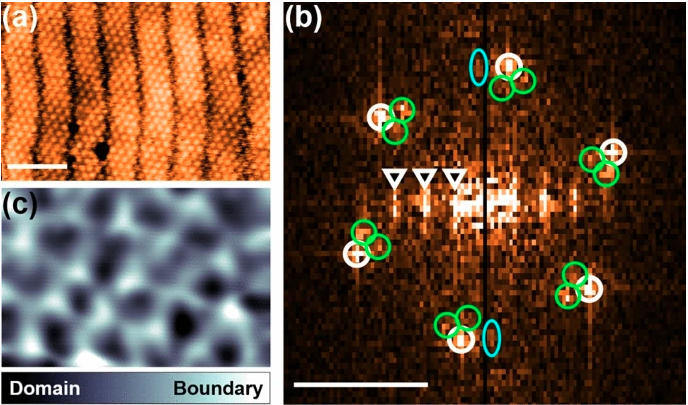Scanning tunneling microscopy study of hidden phases in atomically thin 1T-TaS2
Lower thermal stability due to thinning often leads to unprecedented hidden phases in low-dimensional materials. Such hidden phases can coexist or compete with preexisting electronic phases. We investigate hidden phases observed in atomically thin (6–8 layers) 1T-TaS2 with scanning tunneling microscopy. First, we can electrically induce a hidden stripe phase at room temperature. Such a uniaxial stripe phase has three equivalent orientations by breaking threefold symmetry of 1T-TaS2. We also reveal that the hidden stripe phase coexists with nearly commensurate charge-density-wave phase. Next, we observe that the emergent stripe phase spontaneously appears without any electric excitation on a tiny flake (160×80 nm2). Our findings may provide a plausible explanation for the previously observed phase transition and twofold optical response in thin 1T-TaS2 devices at room temperature. Furthermore, the hidden stripe phase would be crucial to understand exotic CDW-related phenomena in 1T-TaS2 for potential applications.
